Table of Contents
ARTS AND CRAFTS WITH MICE AND RATS
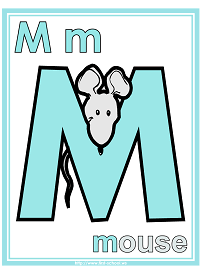 |
First School’s Mouse or Rat Theme page has mouse- and rat-themed activities and crafts for preschoolers. Included are coloring pages, puzzles, stories, and papercraft projects. |
| From the Artists Helping Children website, Mouse & Rat Crafts for Kids is a long list of creative projects, including instructions for paper rat and mouse masks, catnip rat and mouse toys, mouse Christmas ornaments and puppets, a mouse hat, a mouse pincushion, mouse and rat bookmarks, and much more. | |
 |
Good Turn Mouse Crafts has patterns and instructions for making a stuffed felt mouse and a sock mouse. |
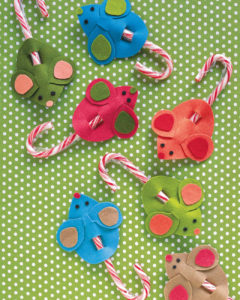 |
Candy Cane Mice has a printable template for making colorful paper mice with candy-cane tails. |
 |
Mouse Crafts for Kids has instructions for making a mouse bookmark (suitable for making the pages of mouse books), recipes for mouse cupcakes, and instructions for making an origami mouse. |
 |
Make mouse corner bookmarks! |
RATS, MICE, PIED PIPERS, AND POETRY
Perhaps the best-known poem about mice is Robert Burns’s “To a Mouse” (1785) which features the immortal lines “The best laid schemes ‘o mice and men/Gang aft agley.” Read and/or listen to it at BBC: Robert Burns.
There’s also Lewis Carroll’s “The Mouse’s Tail” – a concrete poem in the squiggly shape of a tail that appears in Alice’s Adventures in Wonderland.
Though I have to say that my favorite mouse poem is Rose Fyleman’s “Mice” which begins “I think mice/Are rather nice.”
When it comes to rats, however, the poem that leaps to mind is Robert Browning’s “The Pied Piper of Hamelin.”
| The Pied Piper of Hamelin has the text of Browning’s poem along with a list of related stories from other sources. | |
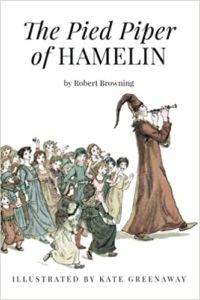
|
Robert Browning’s The Pied Piper of Hamelin (Knopf Doubleday, 1993) with Greenaway’s illustrations is available in an Everyman’s Library hardcover edition. |
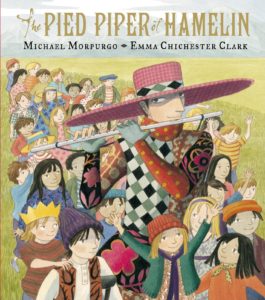
|
Michael Morpugo’s retelling of The Pied Piper of Hamelin (Candlewick, 2011) is an economic take on the tale: the greedy mayor has impoverished the town with crushing taxes, creating a wretched shantytown filled with orphans, trash, and rats. The mayor reneges on a deal with a mysterious stranger to rid the town of rats – with predictably awful consequences – leaving it up to the crippled narrator to help the town solve their problems and engineer the children’s return. For ages 5-9. |
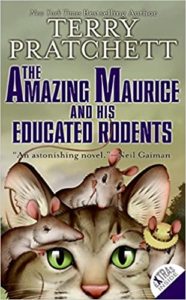
|
Terry Pratchett’s The Amazing Maurice and His Educated Rodents (HarperCollins, 2003) is a cleverly hilarious take on the Pied Piper tale, featuring the criminal-mastermind cat Maurice, some highly intelligent rats, and Keith, a kid with a flute. In company, they collude to fleece a number of towns by first infesting, then dramatically ridding them, of rats. It’s a great money-making scheme until they hit the town of Bad Blintz, where they run into a pair of truly evil rat-catchers. For ages 13 and up. |
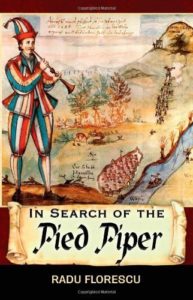 |
What really happened? Radu Florescu’s In Search of the Pied Piper (Athena Press, 2005) explores the mythological and historical origins of the legend. For teenagers and adults. |
MICE, RATS, HISTORY, AND LATIN
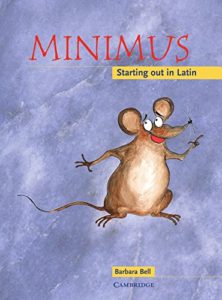
|
Barbara Bell’s Minimus: Starting Out in Latin (Cambridge University Press, 2000) is a Latin course for children ages 7-10, based on the lives of a Roman family: Flavius, commander of the fort at Vindolanda near Hadrian’s Wall around 100 CE, his wife Lepidina, their three children, assorted slaves, a cat named Vibrissa, and – the star – Minimus, a mouse. The book is a colorful and creative mix of panel cartoons, stories and myths, historical and cultural background information (including photographs of Roman artifacts), word lists, and grammar exercises. |
| An accompanying Minimus Teacher’s Resource Book (Cambridge University Press, 2000) has teacher’s guidelines, English translations, and reproducible worksheets.Also available is Minimus Secundus: Moving On in Latin (Cambridge University Press, 2004), for ages 10-13. | |
| See the companion Minimus website for information on the books and program, games and activities, a Latin sentence generator, templates for making a Minimus finger puppet and a pair of Roman sandals, and a Minimus mythology competition. | |
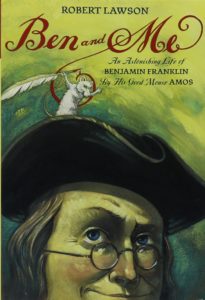
|
Amos the mouse, of Robert Lawson’s Ben and Me: An Astonishing Life of Benjamin Franklin By His Good Mouse Amos (Little, Brown Books for Young Readers, 1988) is the real force behind Franklin’s many inventions and accomplishments. At least so says Amos. A hilarious twist on colonial history for ages 8-12. |
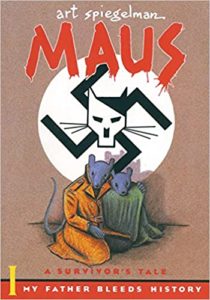
|
When it comes to Art Spiegelman’s Pulitzer-Prize-winning Maus (Pantheon, 1986), don’t be deceived by the comic-book/grapic-novel format: this is a painful, compelling, and brilliantly presented memoir of the Holocaust. The book is based on Spiegelman’s parents’ experiences, both in Nazi-occupied Poland and as survivors, in the aftermath of World War II. Jews are pictured as mice, Germans as cats, Poles as pigs, French as frogs, and Americans as dogs. The story continues in Maus II. For ages 12 and up. |
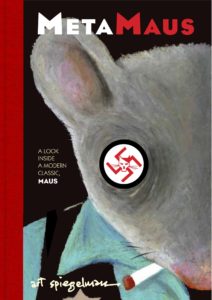 |
Also see Spiegelman’s MetaMaus (Panthon, 2011) a beautifully designed book packed with illustrations, photographs, and interview transcripts, that describes how Maus was made and why. For teenagers and adults. |
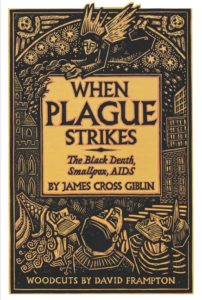 |
James Cross Giblin’s When Plague Strikes (HarperCollins, 1997) is a well-written and fascinating history of three deadly epidemics: the Black Death (bubonic plague), smallpox, and AIDS. The devastating Black Death was disseminated by rats, via their cargo of bacteria-toting fleas. For ages 11 and up. |
